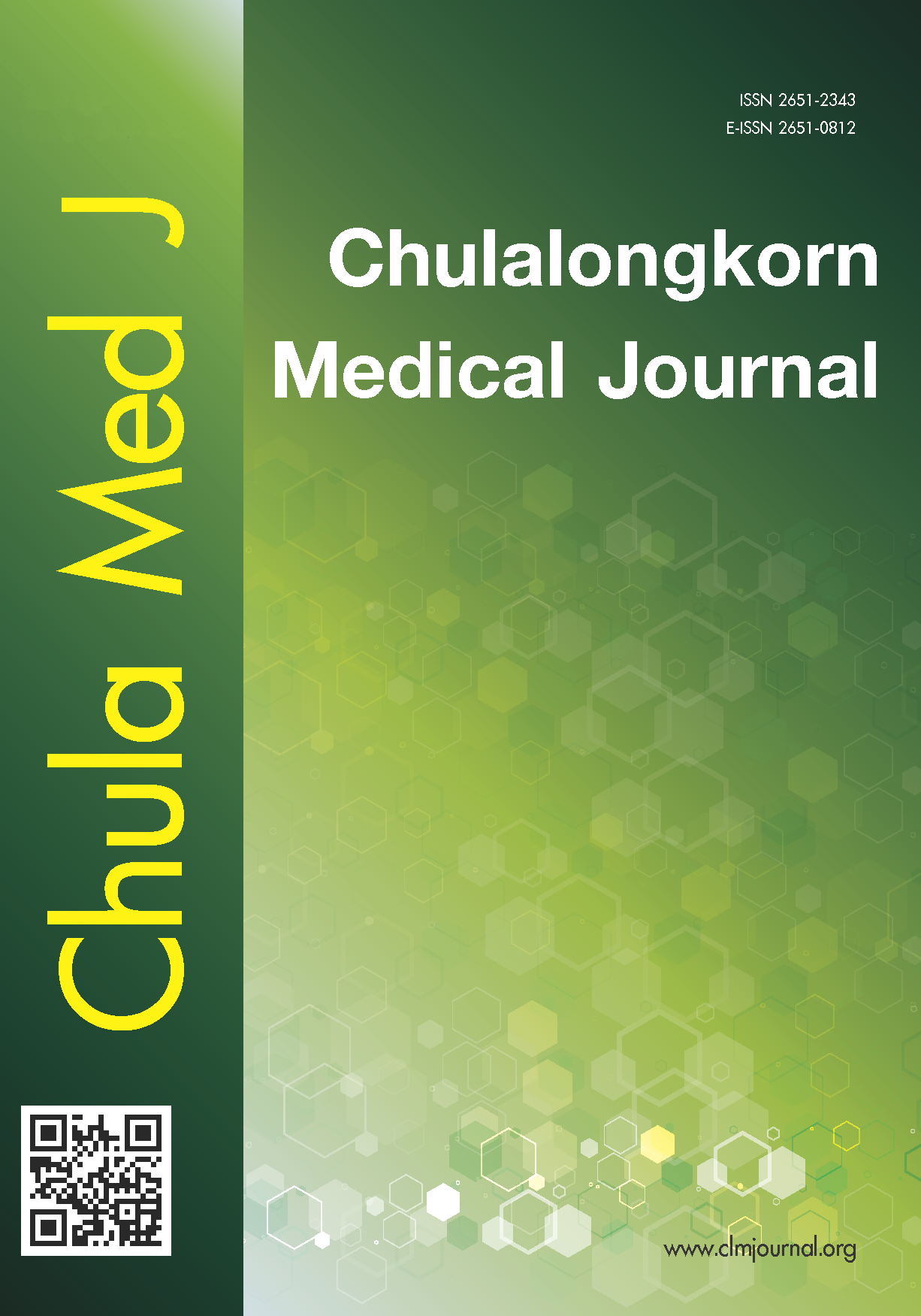Indoor air microbial counts in dormitory of nursing students, Bangkok
Main Article Content
Abstract
Background: Most medical and nursing students live in institute dormitories located in a university hospital
where a variety of biological and chemical hazards are used and probably diffuse into the dormitory environments.
Objectives: This study aimed to investigate bacterial and fungal counts, and microbial groups in a dormitory of
nursing students in Bangkok, Thailand.
Methods: Two-time assessments of bacterial and fungal counts in indoor air samples collected from a dormitory
of nursing students including 8 floors with 95 rooms were carried out. A total of 380 indoor air samples (190 for
bacteria and 190 for fungi) were collected from all dormitory rooms using a BioStage Impactor and 48 outdoor air
samples were collected for comparison. Air samples were collected twice, i.e., in the first month and the third
month of the study.
Results: The mean bacterial counts were 151 + 109 cfu/m3 and 158 + 92 cfu/m3 and those of fungal counts were
374 + 273 cfu/m3 and 363 + 257 cfu/m3 from the first and the second assessment. The lower floors of the dormitory (1 - 4 floors) had significantly higher levels of bacterial and fungal counts in both assessments when compared with the higher floors of the dormitory (5 - 8 floors) (P < 0.001). The percentages of bacterial and fungal counts with > 300 cfu/m3 in the lower floors were significantly higher than those in the higher floors in the first and the second assessments (P < 0.05 and P < 0.001, respectively). Additionally, the most common isolated bacteria and fungi were Staphylococcus spp., and Aspergillus spp., respectively.
Conclusion: This study reveals that the lower floors of the dormitory had significantly higher levels of bacterial
and fungal counts when compared with the higher floors of the dormitory from both assessments. Most isolated
microbes do not generally present a health hazard but high loads may trigger allergic reactions in susceptible
hosts.
